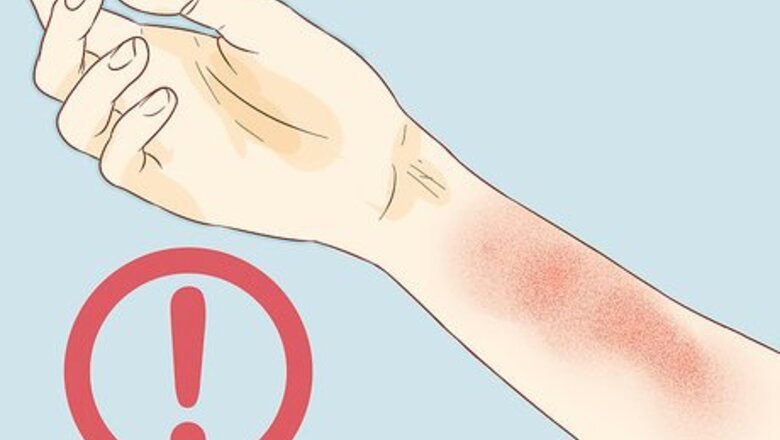
views
Taking Immediate Care of Your Skin
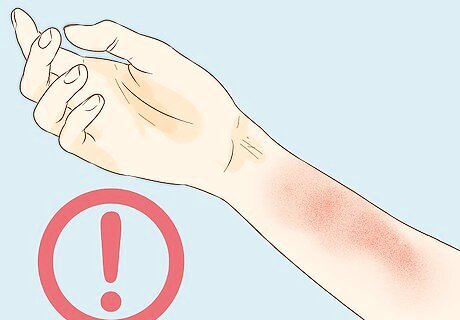
Look for a red rash with blisters. A poison ivy rash is an allergic reaction to the oils secreted by the plant. You will have a red rash, swelling and blisters in the area where you contacted the plant. If you inhaled the burning plant, you may also have breathing issues. This is a serious condition. You should take an antihistamine and get emergency medical help. If you suspect you encountered poison ivy, collect a sample in a plastic bag to show your doctor. Be sure to wear gloves when collecting your sample. Do not touch the plant.
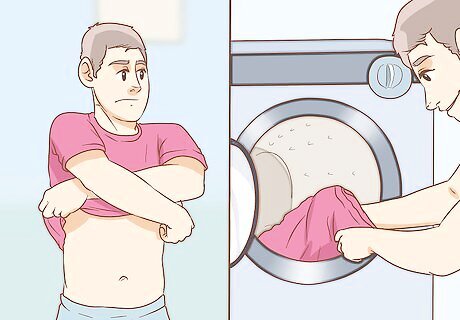
Remove and wash your clothes. Take off your clothes and place them in a plastic garbage bag, if possible. Wash your clothes separately from anything else as soon as possible.
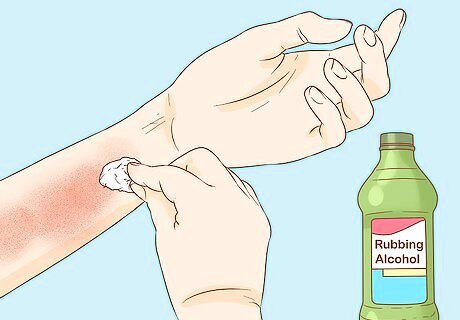
Apply rubbing alcohol. You can apply rubbing alcohol to your skin to dissolve the poison ivy or poison oak oils. Because the toxic oil from the plant seeps into your skin gradually, adding rubbing alcohol to the area will prevent the further spread. It won't provide immediate relief, but it will stem the spread. You can also use an over-the-counter cleanser like Tecnu or Zanfel. Only apply the rubbing alcohol in a well-ventilated room, preferably with an open window or vent. The fumes from the rubbing alcohol can make you feel lightheaded.
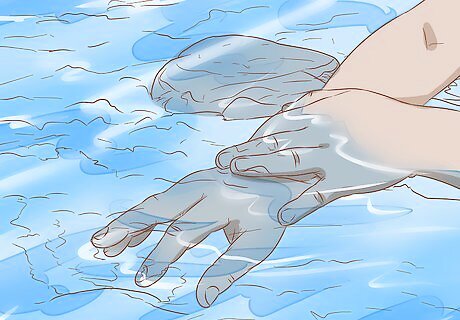
Rinse the area with cool water. Never use warm or hot water, as this will open your pores and allow more of the toxins to sink in. If you're able, keep the affected area under cold running water for 10-15 minutes. If you're outdoors in the woods when you're exposed to poison ivy or poison oak, then you can rinse your body off in a running stream.
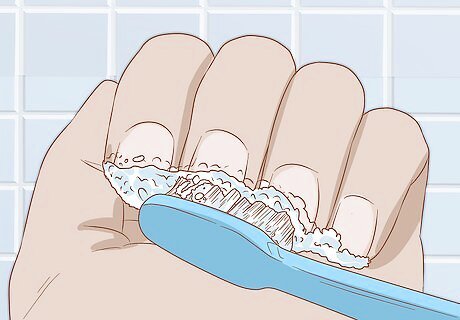
Completely clean the area. Regardless of the location on your body, make sure that it was thoroughly rinsed with water. If you touched the area on your body at all or the poison affected your hands, scrub under your fingernails with a toothbrush in case any oil from the plants was deposited beneath them. Throw the toothbrush away after you're done. Use a dish soap that is used for oil removal to rinse the area of your rash. Because the toxins have been transferred to your skin in the form of an oil, using an oil-obliterating dish soap may help to reduce the spread of the rash. You can use any brand that's labeled for oil-fighting or breaking up oil. If you use a towel to dry yourself after washing the affected area, be sure to wash the towel with the rest of your exposed clothes immediately after use. In some cases, you may have to throw out the towel.
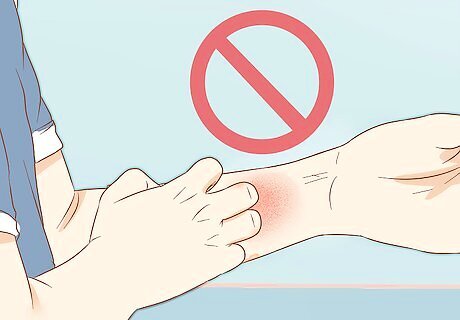
Don't scratch the rash. Even though the rash is not contagious, you could break the skin and allow bacteria to enter the wound. Don't touch or pop any blisters that may form, even if they are weeping. If necessary, cut your nails short and cover the area to keep yourself from scratching it.
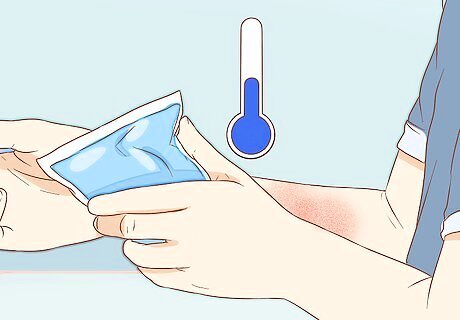
Cool off the exposed area. Apply cold compresses or apply an ice pack for 10 to 15 minutes. Make sure that you don't apply ice directly to your skin; always wrap your ice pack or compress in a towel before application. Also, allow the area to air dry instead of rubbing it with a towel if you get your rash wet. If you need the area to dry faster, it's okay to pat it dry. However, never rub it.
Treating the Itch Caused by the Poison
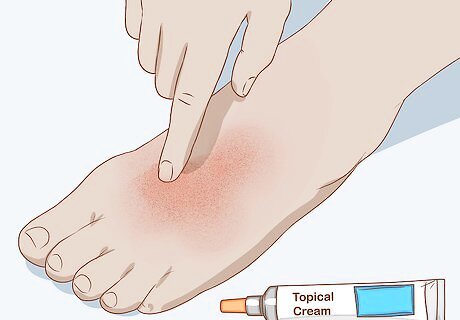
Apply topical creams or lotions. Calamine lotion, capsaicin cream or hydrocortisone cream can provide some relief from itching. Don't do this immediately after contact with the plant (as rubbing the lotion could spread the oils), but after a few hours or days when the itching feeling begins. Capsaicin cream, usually sold in drugstores labeled for arthritis pain relief, burns a bit at first but suppresses itching for hours. If you're in a hot, outdoor environment, hydrocortisone cream may not work. Try capsaicin cream instead.
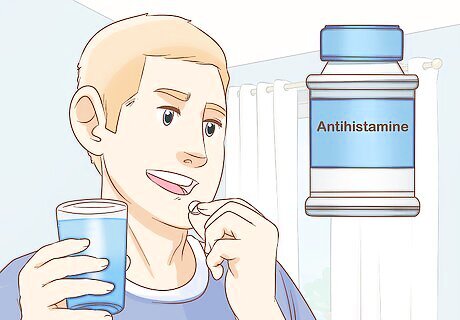
Take antihistamines. Antihistamines are medications that treat for allergies, and since poison oak and ivy cause allergic reactions on contact, taking these drugs may offer minor relief. Antihistamines generally offer only mild relief from the symptoms of poison ivy, but if you take oral medications before bedtime, their combination of anti-itch and drowsiness-inducing effects can help you get some rest. Only take these orally, and do not apply the creams to your poison ivy as this can worsen your rash.

Take an oatmeal bath. Use an oatmeal bath product or an aluminum acetate soak. If you need a quick fix without running to the store, blend a cup of oatmeal in a food processor or blender and add it to your warm bathwater. Avoid using water that is very hot, especially right after being exposed to the poison as this will open your pores.
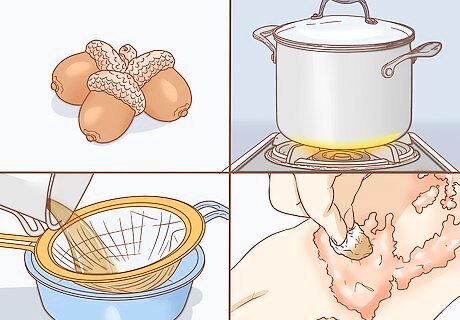
Try an acorn broth. Crack acorns and boil them in water. Strain out the nuts, cool the liquid and apply it to your rash with a cotton pad. Although this method hasn't been studied, it has shown to reduce the itchy feelings of poison ivy rash.
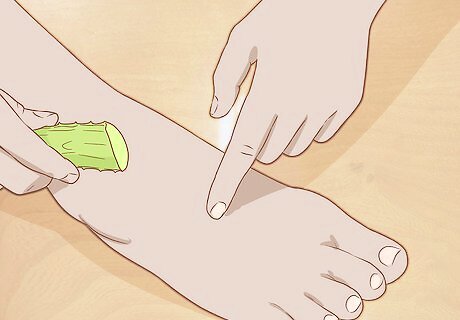
Apply aloe vera. Aloe vera is a cactus-like plant that excretes a cooling gel from its leaves. You can use a real aloe vera plant by snapping off leaves and applying the gel directly to your rash, or use a processed bottled form. If you buy a bottle from the store, make sure that it is at least 95% real aloe vera.

Rinse with apple cider vinegar. Among the many medical treatments apple cider vinegar can be used for, expediting the healing process of poison ivy exposure is one of them. Use a cotton pad to gently apply the vinegar to the area, or rinse it with a mixture of equal parts vinegar and water.

Use baking soda. Make a paste consisting of 3 parts baking soda to 1 part water. Apply the paste to your rash to pull the fluid out of the blisters. Leave the baking soda paste to dry, and allow it to crack or flake off. Reapply this paste every few hours for the best results. Keep in mind that baking soda can irritate your skin, especially if you're sensitive to it. It's best to only try this if you know you aren't sensitive to baking soda.
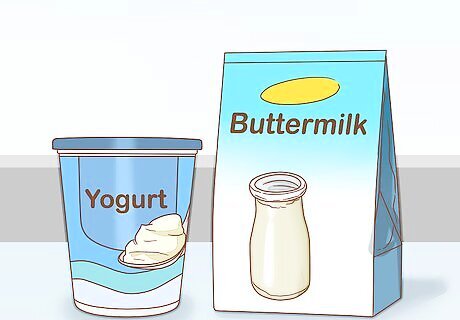
Try using dairy. Use buttermilk or yogurt to apply to your skin, unless you have a dairy allergy. When you apply buttermilk or yogurt to your rash, the proteins will draw out fluid from your blisters. When using yogurt, opt for a plain variety with the fewest additives possible.
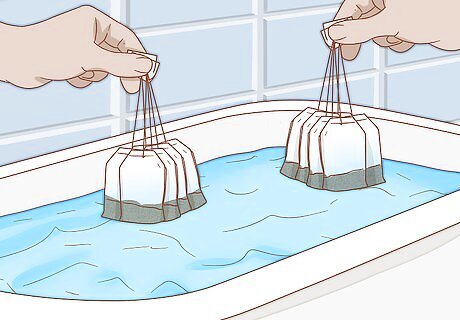
Treat your rash with tea. Fill a bathtub with water and add 12 tea bags, such as chamomile tea for its anti-inflammatory properties. Soak in your tea bath for 20 minutes to help reduce the itchiness and uncomfortable feeling. You can also brew very strong tea and dab it onto your rash with a cotton ball every few hours.
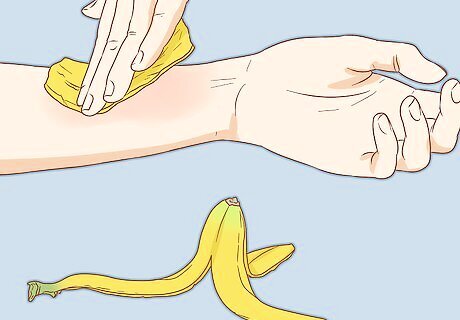
Use chilled fruit rinds. Press a cold watermelon rind or banana peel against your rash. The watermelon rind acts as a cold compress, and the juice helps to dry out blisters. On the other hand, using a banana peel helps to cool and soothe the area.
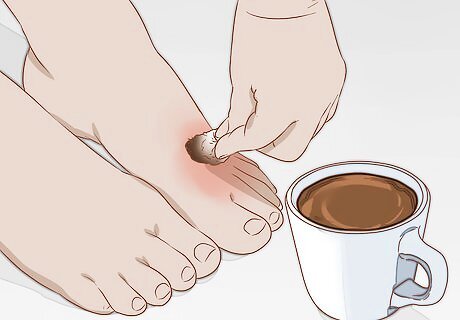
Dab on cold coffee. If you have a bit of leftover dark-brewed coffee, use a cotton pad to dab it onto your rash. You can also brew a fresh cup, but allow the coffee to cool in the fridge before applying it. Coffee contains chlorogenic acid, which is a natural anti-inflammatory.
Preventing Future Exposure
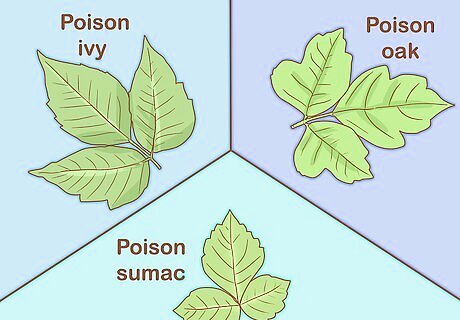
Learn to identify poison plants. Avoid plants that have the following characteristics: Poison ivy has 3 shiny green leaves and a red stem. It grows as a vine, typically along riverbanks or lake shores. It can also be found in woods or forests. As a common rule of thumb remember this simple rhyme: "Leaves of three, leave it be." Poison oak grows as a shrub and has 3 leaves like poison ivy. Poison oak is typically found on the West Coast of the U.S. Poison sumac is a woody shrub with 7 to 13 leaves arranged in pairs. It grows abundantly along the Mississippi River.
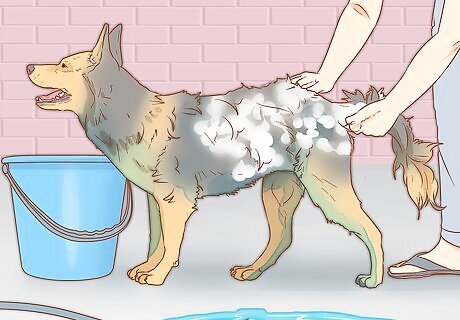
Bathe your pets if they have been exposed to the plants. Pets aren't sensitive to poison ivy or poison oak, but if the oils are trapped on their fur, then they could cause an allergic reaction in anyone who pets them. Use pet shampoo and wear rubber gloves while you're giving them a bath.
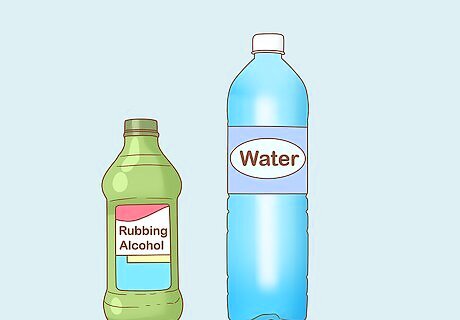
Bring preventative measures. If you are taking a hike or are camping in an area that grows poison ivy, bring extra bottles of cold water and rubbing alcohol. If you apply both of these immediately after coming in contact, you will greatly decrease the spread and pain associated with exposure.

Dress appropriately when going outdoors. It's especially important if you're going into an area where you think you may find poison ivy or poison oak. Wear long sleeved-shirts, long pants and socks. Make sure that you wear closed-toe shoes, and always bring a spare change of clothes just in case of an accident.




















Comments
0 comment